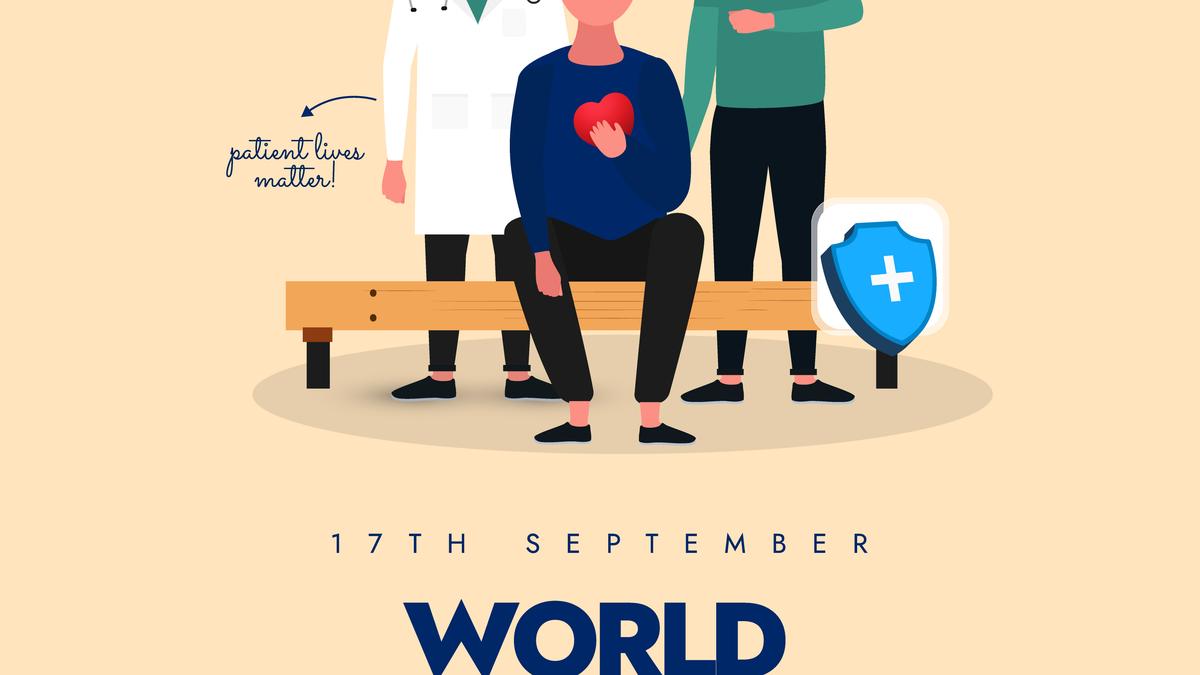On September 17, the world observes World Patient Safety Day. This is a reminder that the basic promise of health care continues to elude us. Globally, estimates show that one in 10 patients experience harm while receiving care during hospitalisation, and this number rises to four in 10 in outpatient care.
For India, where the burden of disease is rapidly shifting to chronic conditions such as cancer, diabetes, heart disease, and mental health disorders, the challenge is especially urgent. These conditions demand long-term frequent treatment, creating more points where safety lapses can occur. In acute care, where the complexity of treatment requires multiple specialities to come together, medical harm happens when there is insufficient coordination.
Many faces of patient harm
Patients are usually vulnerable in more complex situations, such as hospital-acquired infections, blood clots, or even unsafe injection or transfusion practices. However, patient harm can also show up in everyday situations, such as unintentional prescription of inappropriate medicine combinations, delayed diagnoses, or preventable falls.
Hospitals across India are placing higher standards on delivery, by instituting quality audits, developing protocols, running staff trainings, and strengthening infection control alongside patient safety. In practice though, systems designed to protect patients are still vulnerable to breakdowns. From the health care provider’s side, doctors, nurses, and staff often operate under extreme pressure. Staff attrition, heavy patient loads, long shifts, and inadequate staffing mean that even when they want to engage fully with every patient, time and fatigue become serious constraints. In India, unsafe care persists because of a two-way gap — overburdened providers and passive uninformed patients hesitant to ask questions. Closing this gap requires shifting mindsets, where patients must be empowered to become active partners in care, and health care systems must welcome and enable their participation.
A shared responsibility
Patient safety cannot rest on the shoulders of doctors and nurses alone. Families and patients themselves play a vital role, by asking questions, maintaining personal health records, reporting adverse drug reactions, and following safe practices at home, including not self-medicating.
In recent years, India has taken important steps to build this ecosystem. The National Patient Safety Implementation Framework (2018–2025) lays out a roadmap, from adverse event reporting to embedding safety into clinical programs. Professional networks like the Society of Pharmacovigilance, India monitor and report adverse drug reactions nationwide. The National Accreditation Board for Hospitals & Healthcare Providers (NABH) has raised benchmarks for patient safety by auditing and embedding practices for infection control, patient rights, and medication management. Yet far less than 5% of hospitals in India have earned full accreditation.
Civil society has also stepped up. The Patient Safety & Access Initiative of India Foundation works on strengthening regulatory clarity of medical devices. Another non-profit, the Patients for Patient Safety Foundation reaches 14 lakh households weekly on safe health practices. It also equips over 1,100 hospitals and 52,000 professionals.
This responsibility can extend further to the media to shape public understanding by highlighting both failures and successful safety models. Higher education institutions can build safety awareness early; corporates can extend workplace programs and fund safety campaigns through CSR. Even technology innovators have a role by designing workflows that flag harmful drug interactions or aid communication during care.
Building a culture of safety
The WHO Global Patient Safety Action Plan provides a blueprint for integrating safety into all levels of health care systems. One proven mechanism is the establishment of Patient Advisory Councils (PACs) to bring patient voices into hospital decision-making. Case studies from high-income countries show PACs improving safety, communication and trust. India can pilot and scale this model, adapting them to local realities.
As India approaches the final stretch of the National Patient Safety Implementation Framework (2018–2025), governments must renew focus, mobilise resources, incorporate patient safety into medical and nursing education, and close the gap between policy and practice. Hospitals, too, must rise to the challenge, by meeting accreditation standards, embracing PACs, and co-developing technology solutions for catching errors early.
This year’s focus on safe care for every newborn and every child reminds us that we need to safeguard care from the very first breath of life.
True patient safety requires integrated action across the entire ecosystem. We need to move beyond isolated efforts and build a national patient safety movement. On this World Patient Safety Day, let us make this a shared mission, with governments, hospitals, patients, and civil society working together to make safe care an everyday reality of health care in India.
With inputs from Som Mittal, Chairperson, Patients for Patient Safety Foundation (PFPSF), former Chairperson Nasscom and Nadira Chaturvedi, Co-Chairperson, PFPSF
Published – September 17, 2025 02:02 am IST
